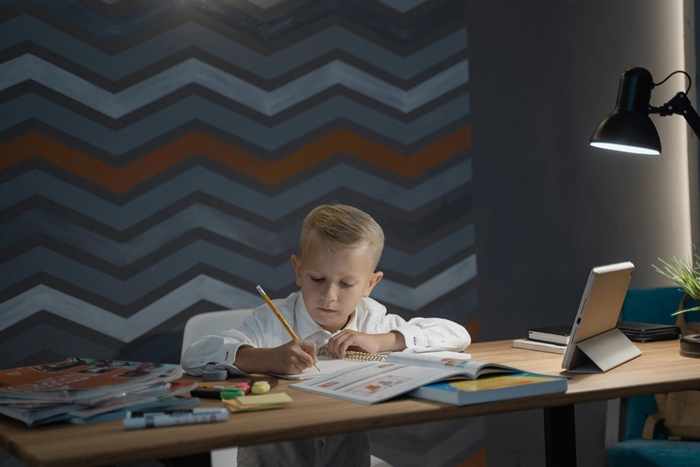A child’s learning environment plays a crucial role in shaping their academic growth and focus. As schooling and homework continue to blend into home life, the importance of a dedicated study space becomes more pronounced. A well-designed study area not only enhances concentration but also fosters responsibility and a positive attitude towards learning. Creating a...
BlogHow to Create a Personalized Study Space at Home for Your Child

A child’s learning environment plays a crucial role in shaping their academic growth and focus. As schooling and homework continue to blend into home life, the importance of a dedicated study space becomes more pronounced. A well-designed study area not only enhances concentration but also fosters responsibility and a positive attitude towards learning. Creating a personalised study space at home is not about luxury—it is about creating a thoughtful, functional, and inspiring setting that caters to your child’s unique learning style.
Understand Your Child’s Needs and Preferences
Before setting up the study space, take some time to observe your child’s learning habits. Do they prefer a quiet corner or a spot with some ambient sound? Are they more productive sitting at a desk, or do they need space to move around occasionally? Children differ in how they process and absorb information. Some might thrive in minimal, distraction-free zones, while others may find motivation in colour and visual elements around them. Including your child in these conversations helps them take ownership of the space and makes the area more meaningful to them.
Choose the Right Location
Picking the right spot in your home is fundamental. It should be well-lit, preferably with access to natural light. A room or corner with good ventilation and limited distractions from household noise or television is ideal. Avoid placing the study table too close to the bed, as it may reduce alertness and lead to sluggishness during study time. If space is limited, even a small area with thoughtful arrangements can serve the purpose, provided it remains consistent and dedicated solely for study.
Invest in the Basics – Desk, Chair and Storage
Comfort and posture are often overlooked when setting up a study corner. Ensure the chair and table are ergonomically suitable for your child’s height. A chair with back support and a table with enough surface area for books, stationery, and a reading lamp can make a big difference in productivity. Poor posture can lead to fatigue and reduce concentration. Adequate storage, whether through drawers, shelves or boxes, is essential to keep the space tidy and organised. An organised study space encourages organised thinking.
Keep it Clutter-Free Yet Creative
While it is important to keep the study area clean and clutter-free, a touch of personal creativity makes the space inviting. You can allow your child to choose their favourite posters, a vision board or motivational quotes. However, avoid going overboard with decorations that can become a distraction. The aim is to strike a balance between function and personality. A small plant, colourful stationery holders or a soft pin board can bring warmth to the space without compromising focus.
Ensure Good Lighting and Minimal Distractions
Lighting directly affects a child’s mood and energy levels. Natural light is best during the day, while in the evenings, a well-placed desk lamp with warm light is recommended. Avoid harsh fluorescent lights or dim, yellow bulbs. Ensure that gadgets like TVs, phones or tablets are not easily accessible unless they are needed for schoolwork. Create a rule where the study zone is strictly for academic use during specific hours to build discipline and routine.
Include a Daily Routine and Time Planner
Having a designated space is the first step; building a habit around it is the next. Encourage your child to use the study space at the same time daily. Placing a simple timetable or task chart on the wall helps them visualise their goals and deadlines. It subtly teaches them time management and self-monitoring. Involving them in setting their daily targets can instil a sense of ownership and motivation.
Encourage Breaks and Movement
No matter how well-designed the study space is, children need breaks. Keep the study area close to an open space or allow them a quick walk every hour. Physical movement improves circulation and refreshes the mind, helping them return to studies with better focus.
A personalised study space is more than just furniture and walls—it is a zone of growth. As your child grows, their academic needs and preferences may change. Be open to modifying the space accordingly. The goal is to create an environment that supports discipline while also making learning enjoyable. With a little thought and effort, you can build a study haven that motivates your child to learn, explore, and excel every single day.